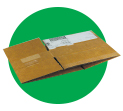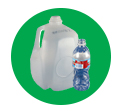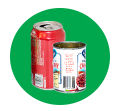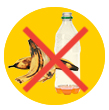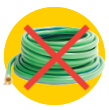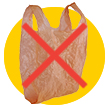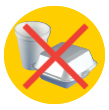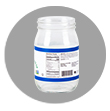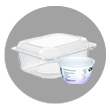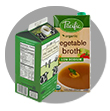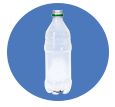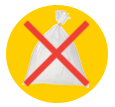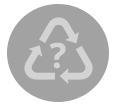Recyclables don’t have to be dishwasher clean. Empty them out, give it a quick rinse, shake off the water and voila! You are good to go!
Begin by mechanically scraping food waste into your compost bucket or trash. Then save the container until you are done with the dishes and use your dirty dish water. This way you will be using water that would be going down the drain anyway. If you don't have any dishwater handy don't use hot water, cold will do just fine. After you rinse it out, shake off the water so other items won’t get wet and throw them in your bin!
Individual cities, counties, and the region's recycling industry are working hard to ensure all the items accepted in local recycling programs are actually recycled. While new worldwide recycling standards have affected the system, materials that are accepted in your local program and that are empty, clean, and dry are still sent to recycling markets and made into something new.
The cleaner the materials, the more valuable they are to the recyclers. Recycling facilities do not clean recyclables. Leftover food in recyclables can grow mold and attract bacteria, rodents, and insects, which makes the material unacceptable for recycling. Leftover liquids in recyclables can spill onto paper and cardboard, making them unrecyclable. These materials will end up being disposed. When you empty, clean, and dry your recyclables, you keep food and liquid out of your bin and allow your recyclables to be made into something new.
Scraping out food with a spatula or a paper towel can be enough to clean a container without water. If that doesn't work, then a way to rinse while minimizing water usage is to fill the container with water, let it sit, and then give it a shake before pouring out the leftover liquid in the sink. Keep in mind that recycling also avoids using the energy needed to mine and manufacture virgin materials and saves natural resources like water, trees, and minerals.
Once you’ve emptied, rinsed, and shaken out the water from your recyclables, it’s okay if there are some remaining water droplets when you put them in the recycling bin. The important thing is to avoid putting in half-full pop bottles or spilling liquids onto cardboard and paper recyclables, which makes them unrecyclable and puts all your good efforts to waste. Also, remember to keep your recycling cart closed to prevent rain or snow from getting everything wet.
After they leave your home, your recyclables are taken to a material recovery facility (MRF – rhymes with ‘smurf’). At the MRF the materials are dumped onto conveyor belts where workers try to remove items that are not recyclable and can either damage the equipment, ruin the value of other materials, or just don’t belong. The remaining materials are sorted mechanically. However, this is not an exact science. If the loads that come into the MRF have a lot of non-recyclable materials, many of those will make it through the process causing the end materials to be unable to be sold to a manufacturer and made into something new.
Common non-recyclable items found in recycling bins include plastic bags, plastic wrap and film, liquids, food, soiled packaging, garden hoses, wire hangers, diapers, electronics, light bulbs, and batteries. Many of these items can be recycled separately — but NOT in a commingled recycle bin.
What is accepted for recycling in your curbside bin varies depending on where you live. To find out about a specific item, check with your local recycling program. For items that do not belong in your curbside bin or hard-to-handle items such as batteries, electronics, household hazardous waste such as pesticides or medications, visit or call 1-800-RECYCLE.
Remember, when in doubt, find out!

